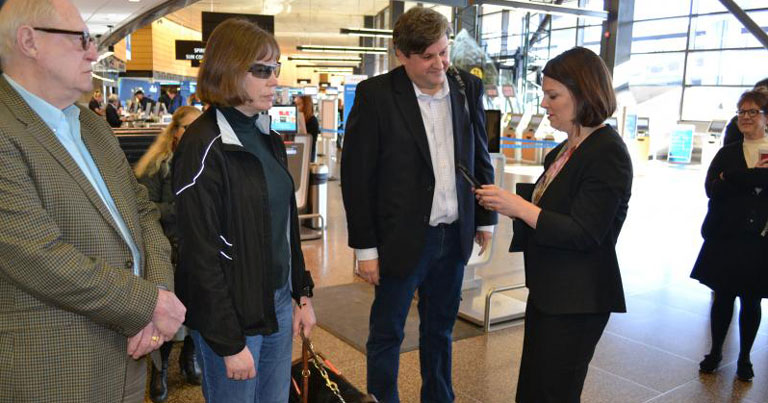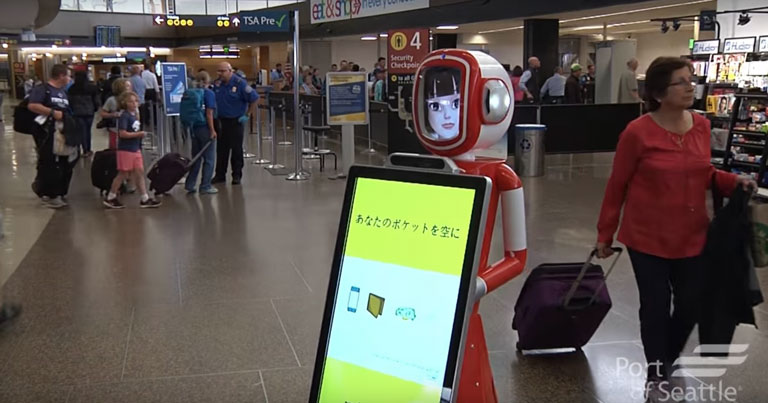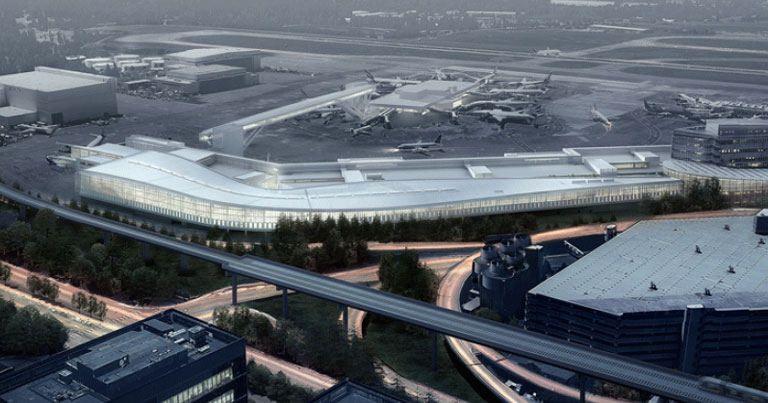2017 was a record-breaking year for Seattle-Tacoma (Sea-Tac) International Airport. Demand for air travel increased by 41% during the last five years, rising from 33.2 million passengers in 2012 to 46.9 million passengers in 2017.
In response to this continuing growth, Sea-Tac expects to spend $3.2 billion on capital development between 2017 and 2022. Last year, the airport broke ground on the new International Arrivals Facility and North Satellite Modernization, major projects designed to meet growing demand, enhance the passenger service and provide more dining and retail options to travellers. Moreover, in February the airport began a new high-profile $17 million renovation to add 10,000 sq ft to the Central Terminal dining area.
“Early adopters of cutting-edge technology”

“Our passengers are tech savvy and have an expectation that we will be early adopters of cutting-edge technology,” says Dave Wilson, Director of Airport Innovation, Port of Seattle, who will speaking in the conference at Future Travel Experience Global 2018, which will take place in Las Vegas between 10-12 September.
Indeed, Sea-Tac is truly leading the way in innovation, and the airport has already experimented with technology such as robotics, virtual reality (VR), assistive technology for blind and visually impaired passengers, and beacons.
“One of our biggest innovations last year was the introduction of Sea-Tac’s employee innovation initiatives, which really took off,” Wilson explains. “This initiative was designed to incubate and champion creative ideas from our employees, literally tapping into the raw talent of our airport staff. After entering an innovative idea into a collaboration website, employees develop a “lean canvas” business plan to more fully explore their ideas. In 2017, 16 employee innovations were presented to the Airport Director’s “Shark Tank” panel. They are all moving forward, although several were “big ideas” and will take several years to implement.”
Some of these projects include the implementation of an assistive technology for blind and visually impaired passengers, in partnership with Aira, as well as virtual reality and gaming platforms used to help build the terminal building. The airport used a VR platform to build the Central Terminal construction simulations and to mock-up pre-design models of its concession programme.

Another example of how Sea-Tac embraces technology, science and operational innovations is Tracy the robot. In July 2017, Sea-Tac launched a trial of a robot to assist passengers through security. Preliminary testing demonstrated positive results, indicating an 18-20% improvement to the overall security checkpoint process. “Tracy was quite a novelty and many passengers, especially children, took selfies with Tracy while waiting in line. We plan to follow-up with an additional test of robot assistance after we complete the implementation of automated screening lanes. Sea-Tac also has robots in our facility performing custodial work,” shares Wilson.
New International Arrivals facility

To meet growing regional demand for international services and enhance the passenger experience, Sea-Tac is currently building a new, expanded International Arrivals Facility (IAF), which is planned to open in late 2019.
Due to the ever evolving nature of facial recognition technology, the Port of Seattle is taking a flexible approach that will allow the continuation of Automated Passport Control (APC) kiosks in the new IAF while providing the ability to install new facial recognition technology.

Looking ahead, Wilson shares more plans for the airport’s technological transformation. In addition to Sea-Tac’s smartphone app, the airport is further investing in visualisation tools and augmented reality to support staff operations and passenger wayfinding.
Another focus will be the implementation of smart lighting in the airport’s North Satellite. The facility will incorporate LED lights with both Bluetooth Low Energy (BLE) iBeacons and visual light communication (VLC) capability. Wilson says: “When we incorporate VLC location services into our smartphone app we can expect sub-metre location accuracy. This capability has much promise and we are anticipating an entirely new passenger experience.”
During Future Travel Experience Global 2018 in Las Vegas, 10-12 September, Dave Wilson will be taking on the role of a “provocateur” to offer his expert opinion, pose questions and challenge the status quo during the conference. He comments: “When I first heard about the role of “provocateur”, I was intrigued both by the opportunity to step out of my comfort zone and to be given license to really “think out of the box”. I’m looking forward to the conference and excited to learn more from each of the keynote speakers. I hope to use the role of provocateur to drill into facets of their presentations which are important to my goals for 2019 and beyond.” Find out more on the FTE Global 2018 website >>







